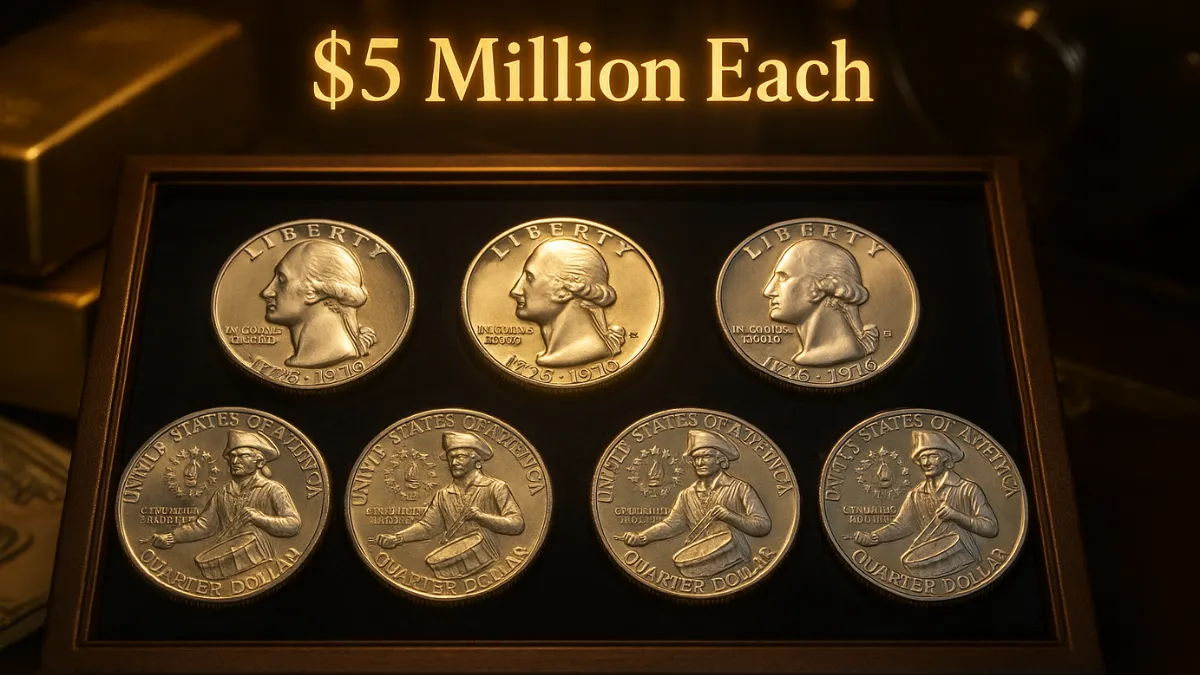Reports say a simple Bicentennial Quarter could be worth a shocking $6.3 million, sounding more like a movie plot than real life. And the wildest part? It might still be out there being used like an ordinary coin.
That’s right. A quarter that was made by the millions and still shows up in vending machines, pants pockets, or couch cushions could actually be worth more than a luxury home.
What Makes the Bicentennial Quarter Unique?
Back in 1976, a special quarter was made to honor 200 years of American freedom. Instead of the usual eagle on the back, this coin had a design by Jack L. Ahr showing a Colonial-era drummer boy. It was part of a big celebration across the country, which also included new designs for the dollar and half-dollar coins.
Most of these coins are still around and easy to find, but a few of them are very rare. One of those rare ones is now said to be worth a whopping $6.3 million.
Rare Features That Make It Valuable
Most Bicentennial Quarters were made using a copper and nickel mix. However, some special ones were made with 40% silver for collectors. Some of these silver coins have minting mistakes or other rare traits that make them highly valuable.
Experts in coin collecting believe one such special coin is the reason behind the $6.3 million price.
What makes these rare coins so valuable?
- A major error during minting
- A perfect “proof” finish
- A rare or unusual backstory
- Very few made, or an unrecorded version
Mistakes like double images, coins struck off-center, or unique errors can add huge value—especially for a coin tied to American history.
Could This Coin Still Be in Circulation?
As strange as it sounds, it’s possible that a $6.3 million quarter could still be floating around. Every day, people handle coins without checking them. Someone might unknowingly spend one of these rare coins while buying coffee or snacks.
What Should You Watch For?
If you want to check your change, here’s what to look for:
- Dates and Design: Look for the dual date “1776–1976” on the front, and a drummer boy on the back.
- Mintmark: Coins with an “S” were made in San Francisco. Some of these are silver.
- Silver vs. Clad: Silver quarters feel heavier and make a different sound. Also, they won’t have the usual copper-colored edge.
- Oddities or Errors: Coins that look strange—like off-center prints or shiny finishes—should be checked closely.
Why Do People Love Rare Coins?
There’s something exciting about rare coins—they show up in the oddest places. Some have been found in old piggy banks, flea markets, or even handed out as regular change.
Besides being cool to collect, rare coins carry history. Many Americans remember 1976 fondly, and the Bicentennial Quarter brings back those memories.
Final Thoughts
We may never know if the $6.3 million Bicentennial Quarter is still being used in shops or resting in someone’s jar of spare change. But one thing’s clear—this story has sparked a new interest in coin collecting across the country.
So next time you get change at a store, take a second to check those quarters. One of them could be the most valuable thing you own.
FAQs
Q1. How much is the rare Bicentennial Quarter worth?
One extremely rare Bicentennial Quarter is said to be worth $6.3 million due to its rare features and error during minting.
Q2. How do I know if my quarter is silver?
Check the coin’s edge—silver quarters don’t have the red copper stripe and usually feel heavier. They also sound different when dropped.
Q3. Which mintmark should I look for?
An “S” mintmark means it came from the San Francisco Mint, and it might be a silver version.
Q4. Are coins with errors really that valuable?
Yes! Coins with printing errors or unusual features are rare and can be worth a lot to collectors.




